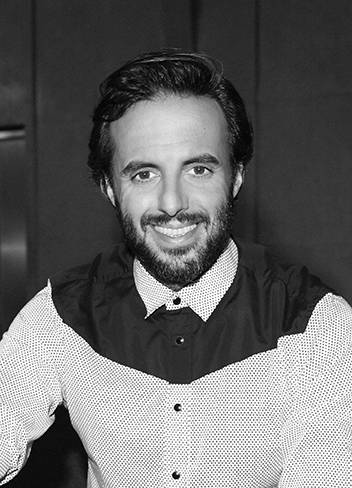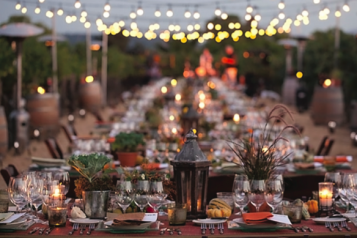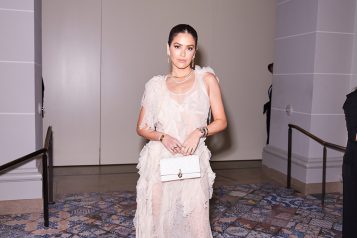
There’s still a few more months left in 2015, but it’s already been quite a year for José Neves, the founder and CEO of the revolutionary luxury fashion e-tailer Farfetch. In March, the 7-year-old site that was created so independent boutiques could compete with the leaders of fashion e-commerce became a rare fashion ‘unicorn’ when it reached a $1 billion valuation. Last spring, Farfetch launched a dedicated menswear homepage and bought Browns, an iconic London fashion boutique, to use as an incubator for retail technology. Farfetch takes another step in the right direction on Oct. 14 with the debut of MYSWEAR, a collaboration with Neves’s footwear company, SWEAR, that will allow a customer to play a designer by experimenting with 3D technology to create their own fully customizable bespoke footwear. Clients will be able to choose from 16 different silhouettes and more than 80 combinations of the finest materials—from sumptuous Nappa leathers, suedes and metallics to ethically-sourced exotic skins, such as python, ostrich and crocodile—and fresh colorways. The shoes are then handmade in Portugal, using traditional artisanal craftsmanship, and delivered within four to six weeks. We caught up with the Portuguese pioneer to talk about Farfetch, which launched in 2008 with 25 boutiques in five countries, and has since grown to more than 300 of the world’s best independent designer boutiques, from Paris, New York and Milan to Bucharest, Kuwait and Tokyo, offering customers more than 100,000 pieces from 1,000 brands. His start-up idea was anything but farfetched.
What do you hear that your customers love the most about your site?
Our customers love the amazing array of products available on Farfetch. They are fashion lovers. They don’t just follow the crowd, but look for unique and interesting pieces to create their own identities, which is exactly what Farfetch offers. Our business proposition means we have an exceptional product offering, with unique pieces from more than 300 boutiques globally. For lovers of beautiful fashion, Farfetch offers the chance to indulge a passion and shop the world.
What’s the hautest, must-have item across the globe?
We sell to the whole world, and therefore see many different trends. For example, Americans have embraced the athleisure trend with gusto, snapping up comfy-cool trainers by the likes of Comme des Garçons and Carven, while in Asia, Valentino’s Rockstud range has taken people by storm. In Europe, flats have swept the continent, with customers opting for chunky soles. Stella McCartney’s sleekly elevated monkstrap shoes are a firm Farfetch favorite.
What are people in San Francisco buying on Farfetch?
Our San Francisco customers favor relaxed, chic pieces from designers such as Brunello Cucinelli, The Row and Givenchy. The laced-up, smart look doesn’t work here. Instead it’s all about understated simplicity. Unique, timeless, vintage pieces are also being snapped up; in particular our fantastic range of Chanel Vintage items.
What are your plans for Browns?
The decision to buy Browns is part of a long-term plan to develop a global technology platform that will shape the retail experience of the future. A continuation of our omni-channel growth strategy, acquiring Browns gives us the opportunity to develop and test new innovations in retail and technology, with the objective of rolling it out to all the other Farfetch partners in 30 countries. Browns is the perfect partner to develop our ‘Store of the Future’ vision, demonstrating it in an iconic retailer, in one of the world’s leading fashion cities. It will continue to run completely independently to the Farfetch business, keeping its strong DNA, but leveraging Farfetch resources.
What did becoming a ‘unicorn’ with the $1 billion valuation mean to the company?
It’s a great accolade to know the value that others place on the business, but what we need to focus on is building the brand. The investment enables us to focus on developing our international and omni-channel propositions. This year, we launched the site in Spanish, German and Korean, bringing the total number of local language sites up to nine, including English, Portuguese, French, Russian, Mandarin and Japanese. More of our international customers will be able to shop in their own languages, using their own currencies and with 24/7 access to customer services in their local languages. We’ve also launched our global shopping and travel app, Farfetch Discover, in the same nine languages. The app not only enables customers to shop on the go, it also offers the ultimate guide of little-known secret locations and travel tips in world-class cities around the globe recommended by cool natives and fashion insiders.
How do you see people shopping for luxury fashion in five or 10 years, and what will that mean for Farfetch?
I’m a believer in physical retail experiences; I always say, ‘clothes are not downloadable,’ which means the complete change that the music and video industry experienced is not going to happen in fashion. However, the days of the physical store as we know it today are numbered. Offline cannot survive without an online extension and vice-versa. This is how people shop these days, and this isn’t going to change! I believe the answer to this question isn’t purely online, but instead, a seamless merge of a fantastic, physical experience with powerful, yet subtle technology.




















